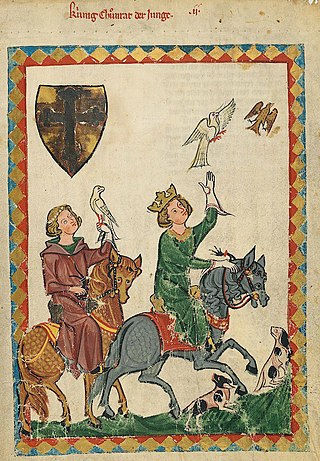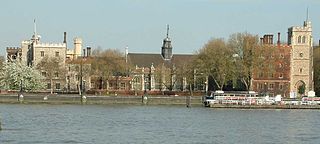Related Research Articles
The 1040s was a decade of the Julian Calendar which began on January 1, 1040, and ended on December 31, 1049.
Year 1252 (MCCLII) was a leap year starting on Monday of the Julian calendar.
Year 1130 (MCXXX) was a common year starting on Wednesday of the Julian calendar.
The 1130s was a decade of the Julian Calendar which began on January 1, 1130, and ended on December 31, 1139.

Year 1320 (MCCCXX) was a leap year starting on Tuesday of the Julian calendar.
The 1250s decade ran from January 1, 1250, to December 31, 1259.

Year 1050 (ML) was a common year starting on Monday of the Julian calendar.
The 1240s was a decade of the Julian Calendar which began on January 1, 1240, and ended on December 31, 1249.
The 1280s is the decade starting January 1, 1280 and ending December 31, 1289.
Year 1251 (MCCLI) was a common year starting on Sunday of the Julian calendar.

Year 1047 (MXLVII) was a common year starting on Thursday of the Julian calendar.
Year 1177 (MCLXXVII) was a common year starting on Saturday of the Julian calendar.

Year 1241 (MCCXLI) was a common year starting on Tuesday of the Julian calendar.

Year 1260 (MCCLX) was a leap year starting on Thursday of the Julian calendar.

Year 1268 (MCCLXVIII) was a leap year starting on Sunday of the Julian calendar.

Boniface of Savoy was a medieval Bishop of Belley in Savoy and Archbishop of Canterbury in England. He was the son of Thomas, Count of Savoy and owed his initial ecclesiastical posts to his father. Other members of his family were also clergymen, and a brother succeeded his father as count. One niece Eleanor of Provence was married to King Henry III of England, and another was married to King Louis IX of France. It was Henry who secured Boniface's election as Archbishop, and throughout his tenure of that office, he spent much time on the continent. He clashed with his bishops, with his nephew-by-marriage, and with the papacy but managed to eliminate the archiepiscopal debt that he had inherited on taking office. During Simon de Montfort's struggle with King Henry, Boniface initially helped Montfort's cause but later supported the king. After his death in Savoy, his tomb became the object of a cult, and he was eventually beatified in 1839.

Robert Grosseteste, also known as Robert Greathead or Robert of Lincoln, was an English statesman, scholastic philosopher, theologian, scientist and Bishop of Lincoln. He was born of humble parents in Suffolk, but the associations with the village of Stradbroke is a post-medieval tradition. Upon his death, he was revered as a saint in England, but attempts to procure a formal canonisation failed. A. C. Crombie called him "the real founder of the tradition of scientific thought in medieval Oxford, and in some ways, of the modern English intellectual tradition". As a theologian, however, he contributed to increasing hostility to Jews and Judaism, and spread the accusation that Jews had purposefully suppressed prophetic knowledge of the coming of Christ, through his translation of the Testaments of the Twelve Patriarchs.
Adam Marsh was an English Franciscan, scholar and theologian. Marsh became, after Robert Grosseteste, "...the most eminent master of England."

The Asen dynasty founded and ruled a medieval Bulgarian state, called in modern historiography the Second Bulgarian Empire, between 1185 and 1280.
Philippa Mary Hoskin is a British historian of the English Middle Ages, who specializes in the religious, legal and administrative history of the English Church. She is the Fellow Librarian of the Parker Library, Corpus Christi College, Cambridge.
References
- ↑ Fancy, Hussein (2016). The Mercenary Mediterranean: Sovereignty, Religion, and Violence in the Medieval Crown of Aragon. Chicago and London: University of Chicago Press. p. 121. ISBN 9780226329789.
- ↑ Crawford, Lillie Rollins; Crawford, Robert Junious (1996). Roos Af Hjelmsäter: A Swedish Noble Family with Allied Families and Emigrants. Baltimore, MD: Gateway Press. p. 493.
- ↑ Needham, Joseph; Ling, Wang; Gwei-Djen, Lu (2000) [1971]. Science and Civilisation in China: Volume 4, Physics and Physical Technology, Part 3, Civil Engineering and Nautics. Vol. IV. Cambridge, New York, Melbourne, Madrid: Cambridge University Press. p. 359. ISBN 9780521070607.
- ↑ Frost, Christian (2016) [2014]. "Architecture, Liturgy and Processions: Bishop Grosseteste's Lincoln and Bishop Poore's Salisbury". In Temple, Nicholas; Hendrix, John Shannon; Frost, Christian (eds.). Bishop Robert Grosseteste and Lincoln Cathedral: Tracing Relationships between Medieval Concepts of Order and Built Form. Abingdon and New York: Routledge. p. 158. ISBN 9781351573580.
- ↑ Jeffreys, Elizabeth; Haldon, John; Cormack, Robin (2008). The Oxford Handbook of Byzantine Studies. Oxford, New York: Oxford University Press. p. 966.
- ↑ Mikaberidze, Alexander (July 31, 2011). Conflict and Conquest in the Islamic World: A Historical Encyclopedia. Santa Barbara, CA, Denver, CO and Oxford: ABC-CLIO. p. 559. ISBN 9781598843361.
- ↑ Coss, Peter R. (1991). Lordship, Knighthood and Locality: A Study in English Society, C.1180-1280. Cambridge, New York, Melbourne: Cambridge University Press. p. 91. ISBN 9780521402965.
- ↑ Minahan, James (2012). Ethnic Groups of South Asia and the Pacific: An Encyclopedia. Santa Barbara, CA, Denver, CO and Oxford: ABC-CLIO. p. 172. ISBN 9781598846591.
- ↑ Rozelot, Jean-Pierre; Lefebvre, Sandrine (2006). "Advances in Understanding Elements of the Sun - Earth Links". In Rozelot, Jean-Pierre (ed.). Solar and Heliospheric Origins of Space Weather Phenomena. Lecture Notes in Physics. Vol. 699. Berlin, Heidelberg, New York: Springer. p. 15. ISBN 9783540337591.
- ↑ Adams, Jonathan (2016). The Revelations of St Birgitta: A Study and Edition of the Birgittine-Norwegian Texts, Swedish National Archives, E 8902. Leiden. Boston: BRILL. p. 31. ISBN 9789004304666.
- ↑ Kleiner, Fred S. (2010). Gardner's Art through the Ages: Non-Western Perspectives. Boston, MA: Cengage Learning. p. 75. ISBN 9780495573678.
- ↑ "St. Anna of Kashin". www.stkatherineorthodoxchurch.org. Retrieved March 6, 2019.
- ↑ Jackson, Guida M. (2009). Women Leaders of Europe and the Western Hemisphere: A Biographical Reference. Bloomington, IN: Xlibris Corporation. pp. 142–143. ISBN 9781469113548.
- ↑ Baird, Robert (1842). Visit to Northern Europe: Or, Sketches Descriptive, Historical, Political and Moral, of Denmark, Norway, Sweden and Finland, and the Free Cities of Hamburg and Lubeck, Containing Notices of the Manners and Customs, Commerce , Manufactures, Arts and Sciences , Education, Literature and Religion, of Those Countries and Cities. Vol. II. New York: J.S. Taylor & Company. p. 45.
- ↑ Emmerson, Richard K.; Clayton-Emmerson, Sandra (2006). Key Figures in Medieval Europe: An Encyclopedia. New York, London: Routledge. p. 479. ISBN 9781136775192.
- ↑ Resnick, Irven (2013). A Companion to Albert the Great: Theology, Philosophy, and the Sciences. Brill's Companions to the Christian Tradition. Leiden, Boston: BRILL. p. 9. ISBN 9789004234079.
- ↑ Shaw, Stanford J.; Shaw, Ezel Kural (1997) [1976]. History of the Ottoman Empire and Modern Turkey. Vol. 1. Empire of the Gazis: The Rise and Decline of the Ottoman Empire 1280-1808. Cambridge, New York, Melbourne: Cambridge University Press. p. 13. ISBN 9780521291637.